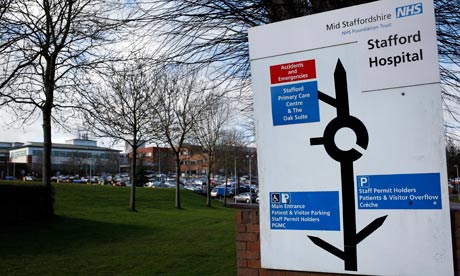The Francis report points to the problem of leadership and culture in the NHS. It begs the question: why were the leaders blind and deaf to the feedback they received from frontline staff, patients and families?
There is no shortage of leaders in the NHS. Many would claim that we have too many leaders and not enough frontline staff. Neither is there a shortage of leadership training at a cost of millions, but the investment has not paid dividends in terms of more reliable organisations.
It is well documented that for an organisation to be "safe", all those involved need to feel safe to challenge mistakes and bad practice. There has been a "culture of fear" in the NHS, which has prevented staff from speaking up and barred patients and their families from being heard. We know that in other safety-critical sectors, such as aviation, there is a focus on "psychological safety" whereby staff are able to speak up if they are troubled by potential failures.
Following another review in the late 80s, the Griffiths report introduced a new leadership culture with a strong emphasis on finance, policies, targets and systems – the creation of a different "world" which exists in separate environment, staffed by different people who seem blind and deaf to the realities of the ward.
Providing and managing good-quality care takes hard emotional labour, a labour that few who have not done the job really understand. It must be frustrating to be advised or managed by those who have never experienced direct contact with patients. Yet it is necessary to both manage the business and care for patients. Legitimate information including targets, key performance indicators, regulation, risk management and financial control are necessary and have delivered improvements.
Professional managers were brought in to make efficiencies with a "managerial mindset", which comes from the manufacturing industry. A leadership/managerial class developed with a language that was not shared by the clinical staff and which produced detached processes for measuring and supervision that is more appropriate to a factory than healthcare. Managers and clinicians left the "management" to the bureaucrats and the gap between the "business" of delivering healthcare and the job of treating patients became ever wider.
Marisa Cassoni, outgoing finance director of the John Lewis Partnership, recently cautioned against drawing too many parallels between supermarkets and hospitals; the former of which are designed around production lines and supply chains. She said:
In my experience, there is a real challenge of putting in centralised processes in service-related industries. There is a tension between people trying to give excellent service and the need to actually standardise processes to get efficiencies of scale.
Many modern organisations suffer from the postmodern disease of the "hollow centre", in which the meaning and purpose has given way to the process. Organisations need to be designed with their core purpose in mind, from the outside in, which means mindful leaders who can bridge the gap between the two cultures. There is an inevitable tension between creating efficient, reliable organisations and fostering adaptable, appropriate and compassionate care. This is not an either/or but a both/and imperative. When this tension breaks down great harm can and does occur.
There is much to learn from private business and industry but it cannot be imported without thought. The old 19th century pyramid-shaped, top-down organisation was built on the assumption that those at the top lead because they are more highly educated. It gave way to the 20th century production line model with professional managers who were there to drive efficiency through standardisation and supervision. The 21st century is characterised by highly complex and specialised work, where the leader's task is to get the best out of people, to enable them collectively to be greater than the sum of their parts. This kind of leadership creates a culture of safety where all voices can be heard.
A new model of a more distributed leadership and interdisciplinary working has been recently introduced through clinical commissioning groups. Managers and clinicians work closely together to create a more patient-centred culture where all voices can be heard.
Staff and patients views can be an effective focus for collective action, resource and responsibility. But they must be held in an ethical tension with the pressures, dilemmas, anxiety, emotion and challenges of caring for people with their many needs. This does not require another model or framework for leadership. Instead, it means that we engender a more reflective way of appreciating this essential dilemma, and hold ourselves and others to account.
Dympna Cunnane is an organisational psychologist and Robert Warwick is a senior visiting fellow and associate director at the Cass Business School Centre for Health Enterprise
This article is published by Guardian Professional. Join the Healthcare Professionals Network to receive regular emails and exclusive offers.













